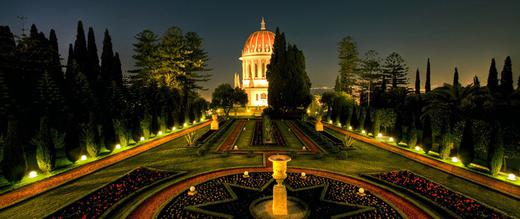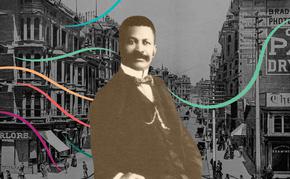The views expressed in our content reflect individual perspectives and do not represent the authoritative views of the Baha'i Faith.
Become as true brethren in the one and indivisible religion of God, free from distinction, for verily God desireth that your hearts should become mirrors unto your brethren in the Faith, so that ye find yourselves reflected in them, and they in you. This is the true Path of God, the Almighty, and He is indeed watchful over your actions. – The Bab, Selections from the Writings of the Bab, p. 55.
What makes the leaders of humanity react so badly to the founders of the world’s great Faiths?
Historically, the authorities and leaders of society have a terrible track record. They’ve treated each of the original founders of our most widespread religions and their early followers very, very badly. Abraham and Moses faced prison, exile, ridicule and persecution. Krishna and Buddha suffered derision and official censure. Society’s leaders crucified Christ, made war on Muhammad and executed The Bab.
Maybe you haven’t heard about The Bab. If not, you should know what happened to this young prophet, who started a progressive religion in the midst of one of the world’s most corrupt and backwards societies, and suffered enormously as a result.
The Bab (which means Gate in Arabic, and is pronounced bŏb) began his new Faith in 1844, emerging out of the prophetic Sufi mysticism prevalent in 19th-Century Persia. The Bab’s stirring message–that he had come to herald the future appearance of a great, worldwide revelation, just as John the Baptist had announced the advent of Christ—rapidly caught fire in that very tradition-bound culture. First just a few learned about the Bab’s teachings, but then thousands and tens of thousands became Babis, breaking away from their society’s Islamic traditions and practices and challenging the authority of its leaders.
The rulers did not react kindly to this new development, to say the least.
Six years after the Bab’s announcement of his new Faith in 1844, the Qajar government ordered the execution of this young, intensely charismatic messenger. They had already gruesomely tortured and killed more than 20,000 of the Bab’s ardent followers during the short, intense six-year duration of the Babi movement. Because the Bab called for revolutionary changes to the prevailing system of religious belief and governance, and because he taught the unity of all religions, the authorities feared that this dynamic challenge and its growing support would soon sweep them from power.
The Persian king and the Islamic mullas tried to put an end to the Babi movement with wholesale genocide against its followers, but more and more people became Babis despite the persecutions. In 1850, frightened of its growing influence and desperate to stop the movement, the authorities decided to execute its leader. When they charged him with apostasy, the same exact charge the Pharisees leveled against Jesus, the Bab refused to repent or refute his teachings, calmly accepting the consequences.
On July 9, 1850, a hundred and sixty-four years ago today, the Bab’s jailers ordered him executed by firing squad in the town square of Tabriz, Persia. One of his young followers insisted on accompanying him, and the authorities gladly consented. A teeming crowd of ten thousand people watched from the roofs of the barracks and the nearby houses surrounding the square.
Earlier that morning Sam Khan, the commander of the regiment of soldiers ordered to execute the Bab, had begged forgiveness from his potential victim. “I profess the Christian faith,” the Russian officer told the Bab in his cell, “and entertain no ill will against you. If your Cause be the Cause of Truth, enable me to free myself from the obligation to shed your blood.”
“Follow your instructions,” The Bab gently told the commander. “And if your intention be sincere, the Almighty is surely able to relieve you from your perplexity.”
When Sam Khan gave the order to fire, the muskets roared. Western journalists who witnessed it reported that “The smoke of the firing of the seven hundred and fifty rifles was such as to turn the light of the noonday sun into darkness.”
When the smoke cleared the Bab had disappeared. His devoted follower stood uninjured at the base of the wall. Their ropes hung in tatters. Astonished, the crowd shouted that they had witnessed a miracle. Sam Khan ordered his 750 riflemen to march away immediately. He swore that he would never again obey such an order, even if it cost him his own life. When Khan’s troops left the square, the colonel of the official Tabriz bodyguard volunteered to carry out the execution. After the guards found the Bab in his cell peacefully finishing a conversation with a follower, they strung him and his follower up again. The huge firing squad took aim and fired.
The second time, the execution succeeded.
The fused, bullet-ridden bodies of The Bab and his faithful follower–called Anis, which means close companion–now repose under a golden dome on Mt. Carmel in Haifa, Israel. Millions of people from all over the globe visit that holy spot, and every day the Shrine of the Bab proclaims the Baha’i message of unity, peace, love and selflessness to the world.
Baha’is believe that the Bab, the Forerunner and Herald of the Baha’i Faith, set in motion a fresh cycle of progressive revelation to humanity. His revolutionary new teachings opened the path for the new message of Baha’u’llah, and his ultimate sacrifice gave us all a new vision of a unified world.


















Comments
Sign in or create an account
Continue with Facebookor